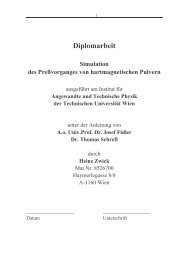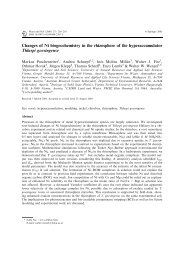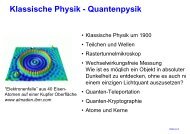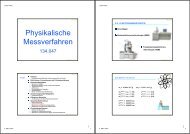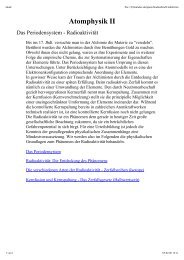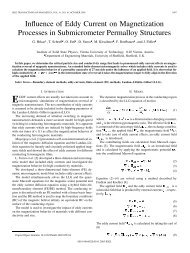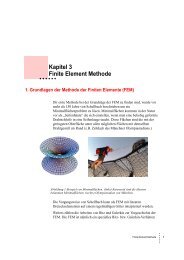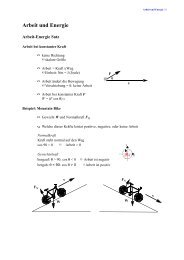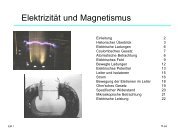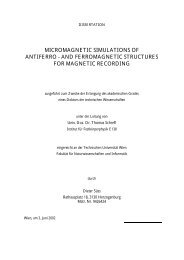Read Back Signals in Magnetic Recording - Research Group Fidler
Read Back Signals in Magnetic Recording - Research Group Fidler
Read Back Signals in Magnetic Recording - Research Group Fidler
You also want an ePaper? Increase the reach of your titles
YUMPU automatically turns print PDFs into web optimized ePapers that Google loves.
Basics<br />
This is justified, because the sense current through MR sensors is normally held constant and<br />
the current density is quite large for the small dimensions of a MR read<strong>in</strong>g head. (The current<br />
density is only limited due to the heat dissipation. Typical values for the critical current<br />
density are 10 7 -10 8 A/cm 2 .) So local charge concentrations are immediately compensated.<br />
Apply<strong>in</strong>g the divergence operator on both sides of equation (2.29) gives<br />
div j = 0 . (2.30)<br />
Thus the source term of the cont<strong>in</strong>uum equation (2.14) vanishes. Comb<strong>in</strong><strong>in</strong>g (2.2), (2.28), and<br />
(2.30) leads to a generalized form of Laplace equation<br />
div( σgrad Φ ) = 0.<br />
(2.31)<br />
If the electric potential is known, it is possible to evaluate the current density us<strong>in</strong>g<br />
j =−σgrad Φ.<br />
(2.32)<br />
2.5 Gibbs’ Free Energy<br />
The equilibrium state of an isothermal and isobaric thermodynamic system is characterized by<br />
the m<strong>in</strong>imum of its Gibbs’ free energy E.<br />
∫<br />
E = F − J⋅H dV<br />
(2.33)<br />
ext<br />
F = U −T⋅ S+ p⋅ V is the free energy, where U is the <strong>in</strong>ner energy, T the absolute<br />
temperature, S the entropy, and V the volume of the magnetic system. For constant<br />
temperatures and neglected magnetostrictive effects, which means keep<strong>in</strong>g the volume and<br />
the temperature constant, the free energy is reduced to U. The <strong>in</strong>ner energy U can be<br />
calculated as the sum of the stray field energy E S , the exchange energy E exch , and the<br />
magnetocrystall<strong>in</strong>e anisotropy energy E ani , so the total Gibbs’ free energy can be written as<br />
E = ES+ Eexch + Eani+ EH.<br />
(2.34)<br />
Here E H is the magnetostatic energy and arises from the external field H ext . The equilibrium<br />
state of such a magnetic system is determ<strong>in</strong>ed by<br />
15



